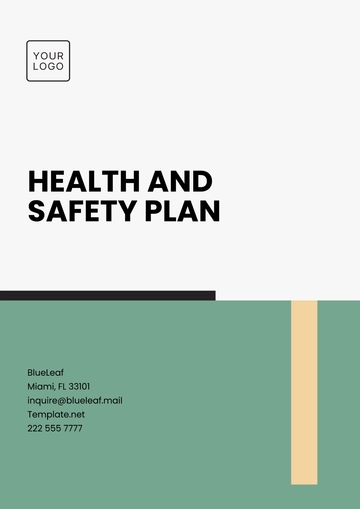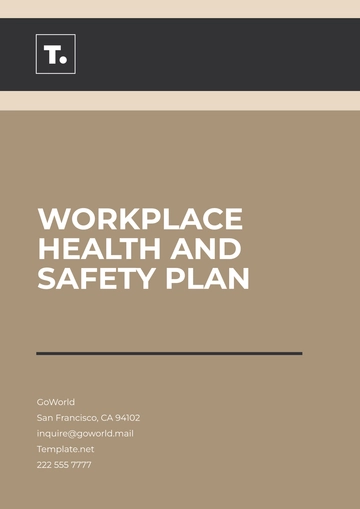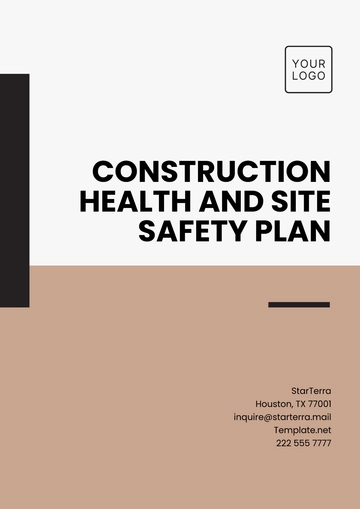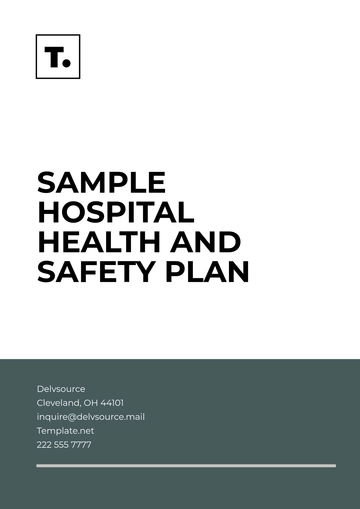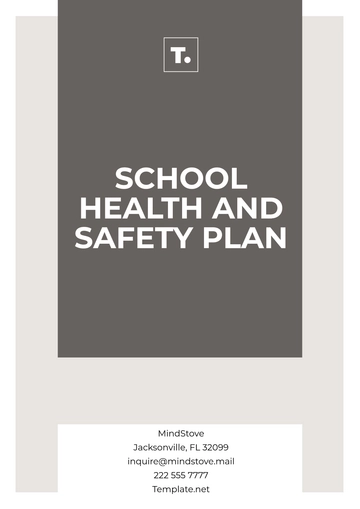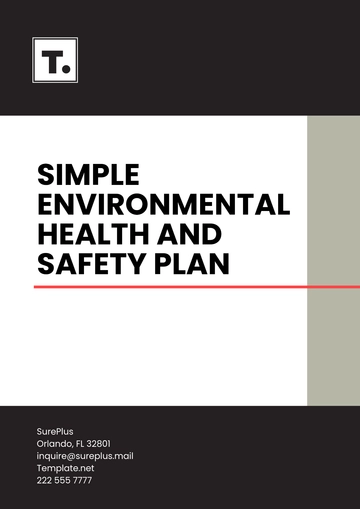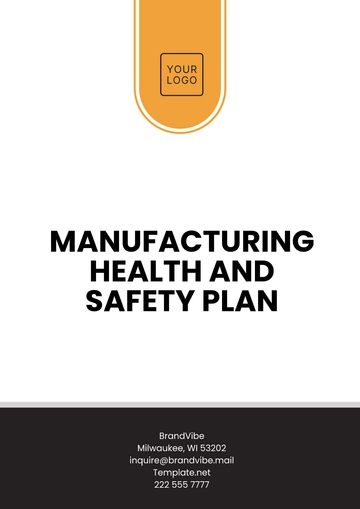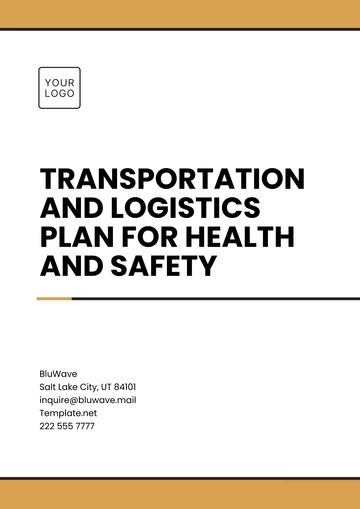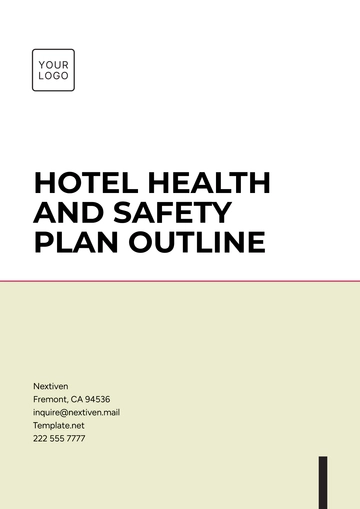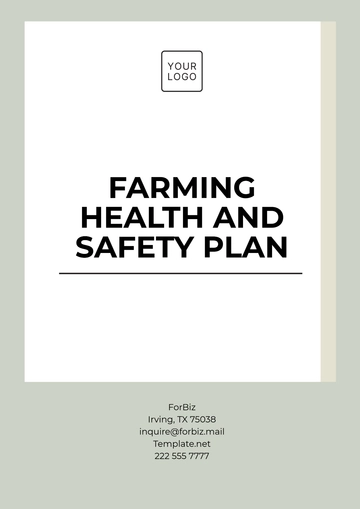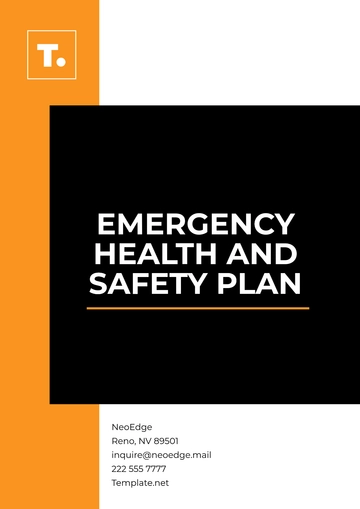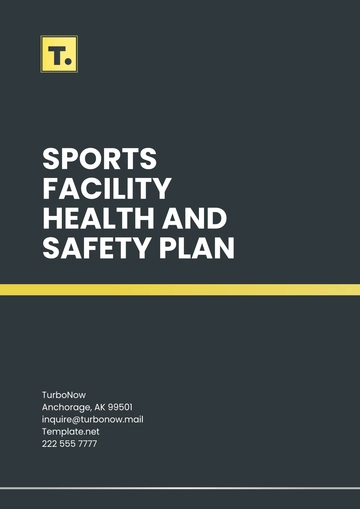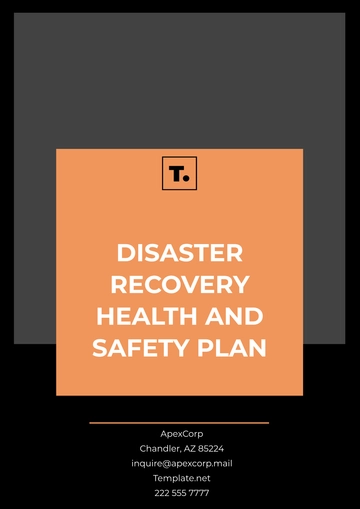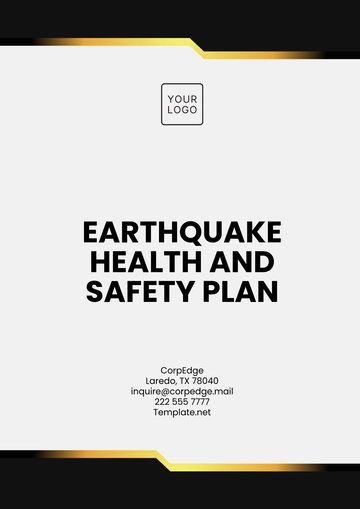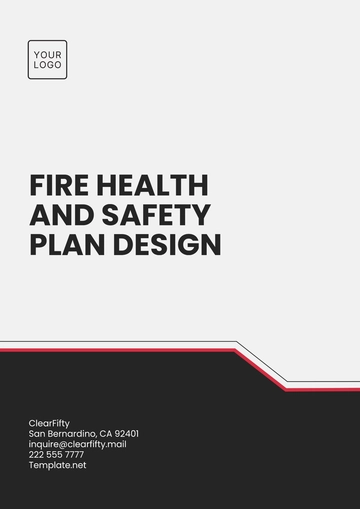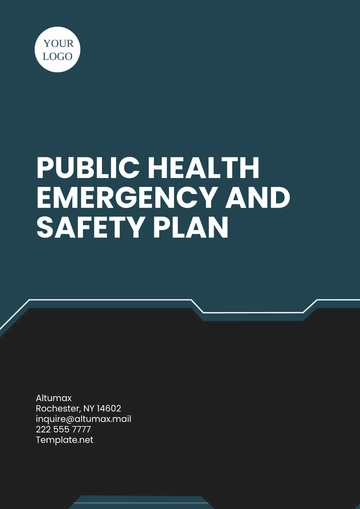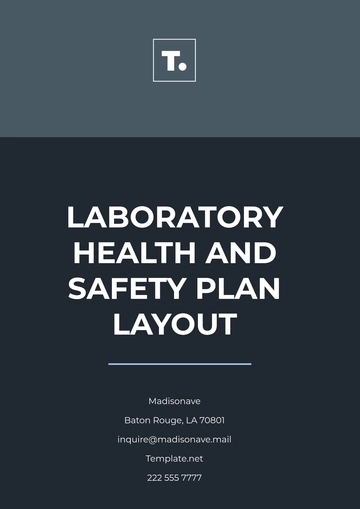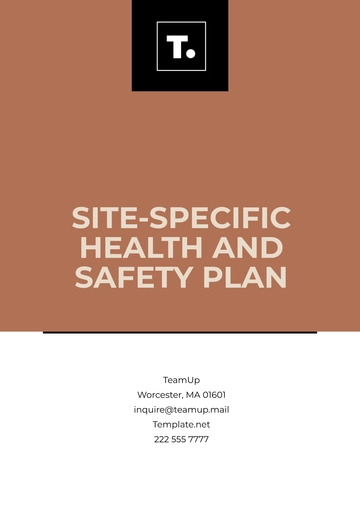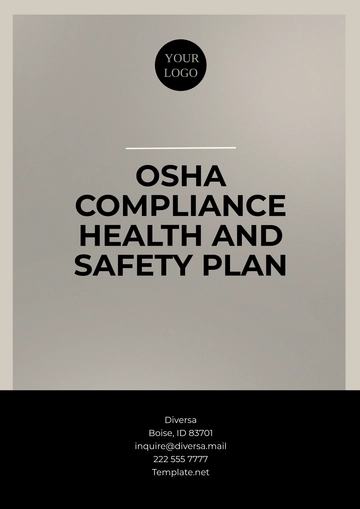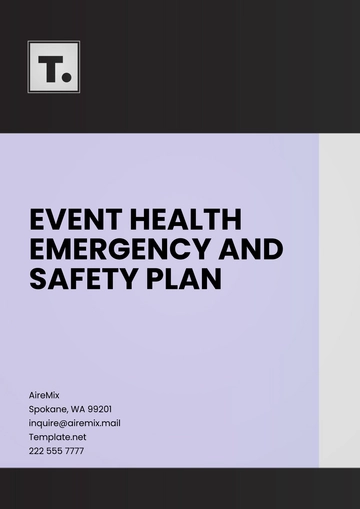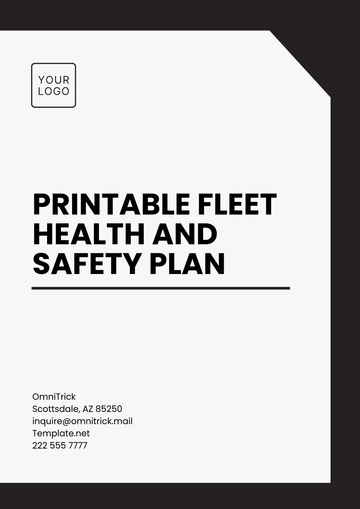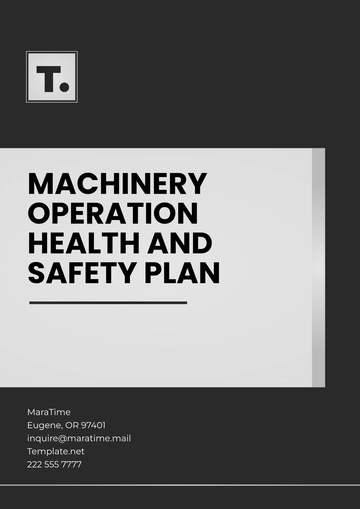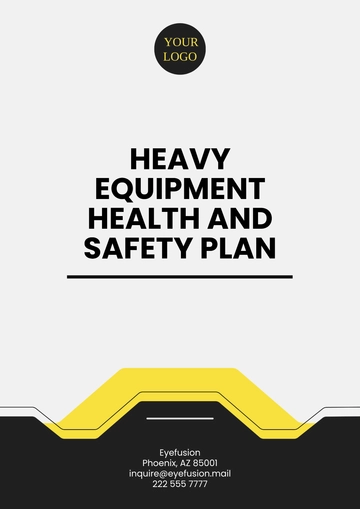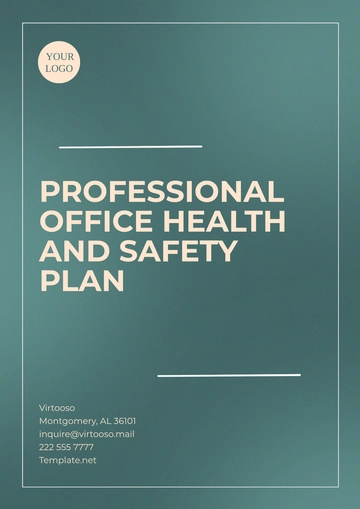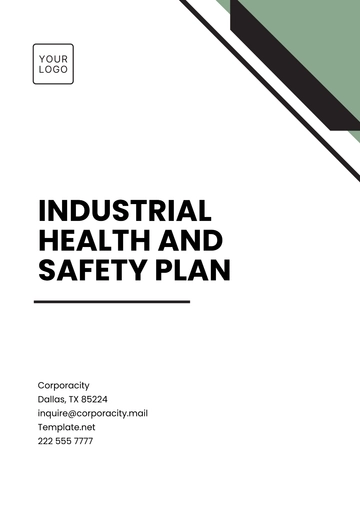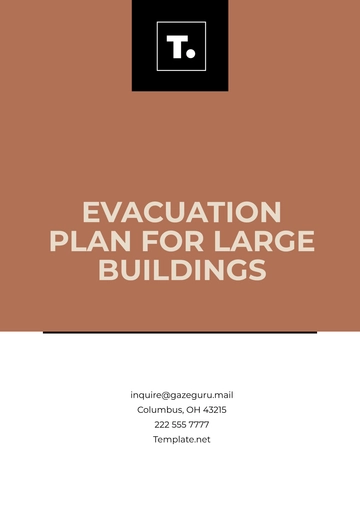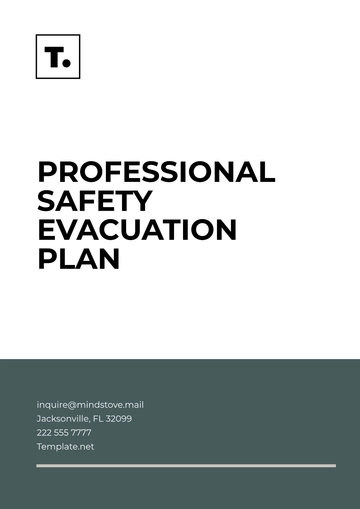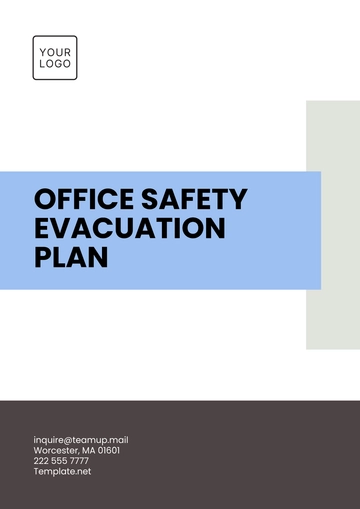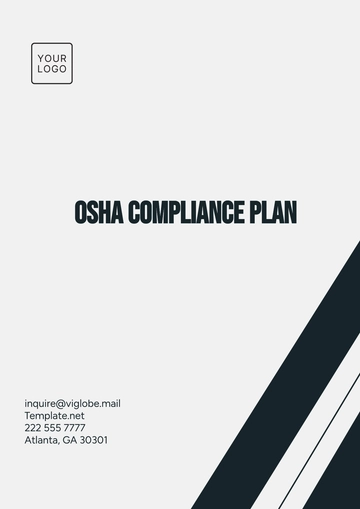Free Baby Sitting Safety Plan
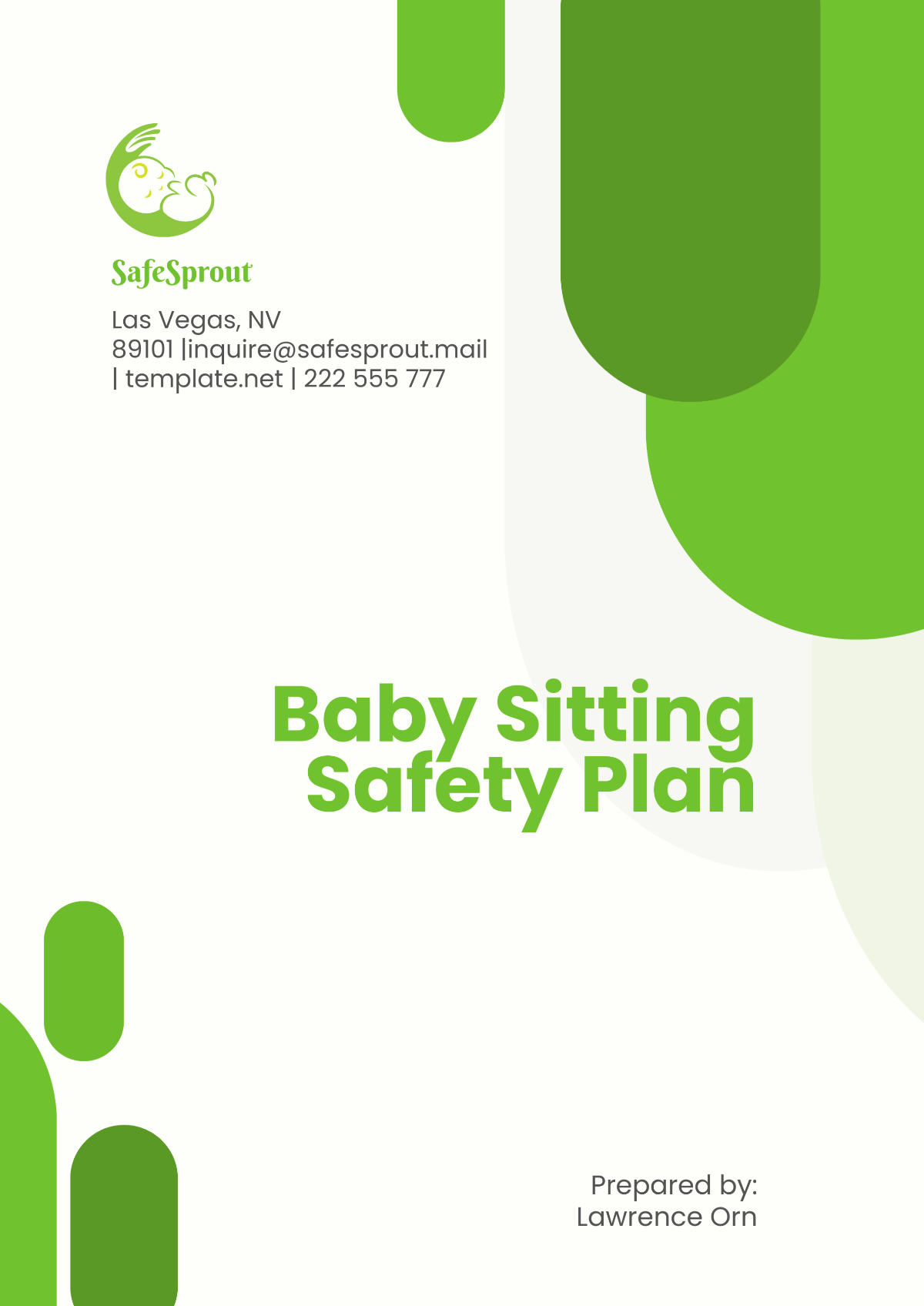
1. Introduction
1.1 Purpose
The Baby Sitting Safety Plan by [Your Company Name] is designed to create a structured framework to ensure that children are cared for in a safe, nurturing, and responsible manner. Babysitting can be an essential service for families, and the importance of implementing safety protocols cannot be overstated. By following this plan, babysitters will be better equipped to handle various situations, ranging from minor household hazards to critical emergencies. This plan also establishes trust between [Your Company Name], babysitters, and families by demonstrating a proactive approach to safety and responsibility.
This safety plan aims to empower babysitters with knowledge and tools to mitigate risks and foster a safe, stimulating, and positive environment for children of all age groups. Moreover, it serves as a foundation for ongoing improvements in child care practices at [Your Company Name].
1.2 Scope
This plan applies to all babysitters associated with [Your Company Name] and is intended for use in both private homes and other care environments. It encompasses children ranging from infancy to preadolescence ([0–12 years]) and addresses key aspects such as home safety, health care needs, emergency responses, and effective communication with families.
The scope also extends to specialized cases where children with unique medical or behavioral conditions require additional care. Every babysitter at [Your Company Name] is expected to comply with these guidelines, ensuring consistency in quality and safety standards across all assignments.
2. Safety Procedures
2.1 Emergency Preparedness
Emergency preparedness is one of the cornerstones of effective babysitting. By being well-prepared for emergencies, babysitters can prevent small incidents from escalating into major problems.
Emergency Numbers: Babysitters must have easy access to critical numbers, including parents, nearby relatives, and local authorities. These numbers should be verified before starting any babysitting session to ensure accuracy.
Evacuation Plan: Babysitters should practice basic evacuation techniques and know the safest and quickest exits from the house. In multi-level homes, specific evacuation routes for each floor should be discussed with parents in advance.
Emergency Supplies: Along with first aid kits, babysitters should know the location of flashlights, extra batteries, and emergency blankets. They should also identify safe meeting spots outside the home in case of evacuation.
Table 1: Emergency Contact Checklist
Contact Type | Name/ Description | Phone Number | Alternate Phone Number | Notes |
|---|---|---|---|---|
Parents/Guardians | John and Sarah Smith | (555) 123-4567 | (555) 987-6543 | Both parents' mobile numbers included. |
Emergency Contact 1 | Lisa Johnson (Neighbor) | (555) 222-3344 | (555) 444-5566 | Lives within 2 miles, available evenings. |
Emergency Contact 2 | Paul Green (Uncle) | (555) 333-6677 | N/A | Knows the child’s medical history well. |
Pediatrician | Dr. Emily Carter | (555) 555-8899 | N/A | Clinic located at [Your City Address]. |
Local Emergency Services | Fire/Police/Ambulance | 911 | N/A | Call immediately for life-threatening emergencies. |
Poison Control Hotline | National Poison Hotline | 1-800-222-1222 | N/A | Available 24/7 for accidental ingestions. |
2.2 Fire Safety
Household fires pose a serious risk, especially when children are involved. Babysitters must remain vigilant and adhere to fire safety protocols.
Fire Drills with Children: Babysitters should conduct a simplified fire drill with older children, teaching them the importance of staying low during a fire to avoid smoke inhalation and using a designated exit route.
Electrical Safety: Ensure that electrical outlets are covered, particularly in homes with toddlers. Report any frayed wires or faulty appliances to the parents for prompt repair.
2.3 Basic First Aid
A solid understanding of first aid enables babysitters to handle minor injuries effectively and confidently.
Minor Injuries: Babysitters should know how to clean wounds with antiseptic wipes, apply bandages, and use ice packs to reduce swelling.
Burn Treatment: For minor burns, babysitters should rinse the area with cool water and inform the parents immediately. For severe burns, call [911] and avoid applying creams or ointments without medical advice.
Handling Nosebleeds: Instruct the child to sit up and lean forward, pinching the nose gently. Encourage calm breathing through the mouth and apply pressure for at least [10] minutes.
Table 2: First Aid Kit Checklist
Item | Quantity Required | Notes |
|---|---|---|
Adhesive Bandages (various sizes) | 20+ | For minor cuts and scrapes. |
Antiseptic Wipes | 10+ | Clean wounds to prevent infection. |
Sterile Gauze Pads | 5–10 | For larger wounds or heavy bleeding. |
Medical Tape | 1 Roll | Secure gauze or bandages. |
Tweezers | 1 | For removing splinters or debris from wounds. |
Scissors (blunt tip) | 1 | For cutting gauze or clothing if necessary. |
Instant Cold Packs | 2+ | Reduce swelling for sprains or bumps. |
Disposable Gloves | 5+ pairs | For hygienic handling of injuries. |
Thermometer (digital) | 1 | Monitor fevers. |
EpiPen (if applicable) | As needed | Only if prescribed for the child. |
Child-safe pain reliever (liquid/chewable) | As needed | Must have parent approval before administering. |
2.4 Hygiene Practices
Maintaining good hygiene is critical for preventing the spread of germs and illnesses among children.
Diaper Changing Protocol: Always use gloves and dispose of soiled diapers in a designated waste bin. Wipe the baby’s skin gently and apply barrier cream if needed.
Proper Disinfection: Babysitters should sanitize toys, bottles, and eating utensils, especially after mealtime or outdoor activities. Clean surfaces regularly using child-safe disinfectants.
3. Child-Specific Safety
3.1 Understanding Allergies and Medications
Caring for children with allergies or medical conditions requires attention to detail and proactive measures to prevent complications.
Emergency Allergy Protocols: Babysitters should know the location of allergy action plans, including EpiPens or antihistamines, and understand when and how to use them.
Food Labels: For children with food allergies, babysitters should double-check all food packaging for allergen warnings before serving snacks or meals.
3.2 Handling Behavioral Challenges
Every child is unique, and managing behavior effectively involves patience and understanding.
Defusing Tension: In cases of sibling disputes or tantrums, the babysitter should use distraction techniques such as suggesting a new activity or involving the children in problem-solving.
Calm Down Space: Create a designated quiet area where children can go to relax and regain composure. Ensure that this space is safe and inviting, with comforting items like soft pillows or blankets.
3.3 Age-Appropriate Activities
Engaging children in age-appropriate activities keeps them entertained and minimizes the risk of accidents.
Supervised Activities: Outdoor play should always be closely monitored, with particular attention paid to playground equipment or swimming pools.
Encouraging Creativity: Provide materials for safe, creative play, such as coloring books, clay, or simple crafts. Avoid using scissors or small beads with younger children.
Table 3: Age-Appropriate Activities
Age Group | Activity Type | Examples | Supervision Notes |
|---|---|---|---|
Infants (0–1 year) | Sensory Stimulation | Soft rattles, tummy time mats. | Ensure items are non-toxic and too large to swallow. |
Toddlers (1–3 years) | Interactive Play | Stacking blocks, sing-alongs. | Avoid small objects and ensure childproof spaces. |
Preschool (3–5 years) | Creative Activities | Coloring, simple crafts with large items. | Supervise use of markers or glue. |
School-Age (6–9 years) | Outdoor Play | Tag, ball games, bike rides. | Monitor closely, especially near roads or water. |
Preteens ([10–12 years]) | Independent Tasks | Board games, reading, beginner cooking (no stove). | Ensure safety in handling tools or appliances. |
4. Home Safety Guidelines
4.1 Securing Potential Hazards
A well-prepared babysitter ensures that the environment is free from hazards before children are allowed to explore freely.
Securing Furniture: Heavy furniture such as bookshelves or dressers should be anchored to the walls to prevent tipping accidents.
Out of Reach: Medications, vitamins, and alcohol should be stored in high or locked cabinets.
4.2 Food and Kitchen Safety
Food preparation is another area where diligence is essential.
Temperature Checks: Before serving food to infants or toddlers, babysitters should check the temperature to ensure it’s not too hot.
Knife Safety: Always use the back of the counter to store knives and sharp objects, keeping them out of children’s reach.
5. Communication Plan
5.1 Contact Information Checklist
An effective communication plan begins with a comprehensive and accurate list of contact details. Babysitters must have this information readily accessible in both digital and hard-copy formats.
Parents' Contact Information: Babysitters should verify parents' phone numbers, including mobile, work, and home numbers. It is important to ask for alternative numbers in case of network issues.
Emergency Contacts: Babysitters must be provided with at least two additional emergency contacts, such as a neighbor, close friend, or relative, who can respond if parents are unavailable.
Medical Contacts: The child’s pediatrician, local urgent care centers, and the closest hospital’s emergency room contact details should also be noted. Babysitters should be informed of any family health insurance details that might be needed in emergencies.
Babysitters should keep these contacts in an easily accessible format, such as a laminated card or a secure app provided by [Your Company Name]. In addition, a backup copy should always remain in the child’s care bag.
5.2 Reporting Protocols for Emergencies
Emergencies can range from minor issues like a scraped knee to major incidents requiring immediate medical intervention. Babysitters must be well-versed in the reporting structure to ensure clear and efficient communication.
Minor Incidents: For minor injuries or behavioral incidents, babysitters should complete an incident log with the following details:
Date and time of the incident
Description of what happened
Actions taken to address the situation
Child’s response
Babysitters must communicate these incidents to parents verbally upon their return and hand over a written or digital log.
Major Emergencies: In cases of severe injury, allergic reaction, or any life-threatening situation:
Call emergency services immediately (911 or the equivalent local number).
Notify parents or emergency contacts.
Provide first responders with relevant medical information about the child.
Behavioral Reports: If a child displays unusual or concerning behavior, such as persistent withdrawal, aggression, or fear, the babysitter should document observations in detail and communicate this information to parents promptly.
5.3 Daily Updates
Clear daily communication between babysitters and parents is essential for fostering trust. Babysitters should:
Provide a summary of the day’s activities, meals, and nap schedules.
Note any changes in the child’s mood, appetite, or overall behavior.
Share photos or videos (with parental consent) to reassure parents and create transparency about their child’s day.
6. Training and Certification
6.1 Mandatory Training Programs
At [Your Company Name], the safety and professionalism of our babysitters are upheld through mandatory training programs. These programs are designed to address common scenarios and prepare babysitters for unexpected challenges.
CPR and First Aid Certification: Babysitters must complete certified programs that cover infant, child, and adult CPR, choking management, and basic wound care. These certifications must be renewed every [2] years to ensure skills remain current.
Child Development Training: Understanding developmental milestones helps babysitters tailor their care to the child’s needs. Training sessions cover physical, emotional, and cognitive development stages for children aged [0–12 years].
Specialized Training: Babysitters assigned to children with specific needs, such as autism, ADHD, or medical conditions, undergo specialized training. These courses include strategies for managing meltdowns, creating sensory-friendly environments, and responding to medical emergencies.
Table 4: Babysitter Training Overview
Training Program | Description | Duration | Renewal Frequency | Mandatory/ Optional |
|---|---|---|---|---|
CPR Certification | Covers infant, child, and adult CPR techniques. | 4–6 hours | Every 2 years | Mandatory |
Basic First Aid | Includes wound care, burn treatment, and more. | 3 hours | Every 2 years | Mandatory |
Child Development Training | Teaches developmental milestones and activities. | 8 hours | Not required to renew | Mandatory |
Specialized Care Training | Addresses autism, ADHD, and medical needs. | 6–10 hours | Case-specific review | Mandatory for special cases |
Scenario-Based Emergency Drills | Simulated fire, choking, or allergy emergencies. | 2 hours/ session | Annually | Mandatory |
6.2 Periodic Reviews
To maintain high standards of care, babysitters are required to participate in periodic evaluations and refresher courses.
Quarterly Refresher Workshops: These workshops address updates in child safety regulations, such as new laws on car seat safety or toy recalls. They also revisit core topics like first aid and emergency preparedness.
Scenario-Based Training: Babysitters practice responding to simulated emergencies, such as a mock fire drill or an allergy-related incident. This hands-on approach ensures they remain confident in their abilities.
Performance Evaluations: Supervisors or senior babysitters conduct performance reviews based on feedback from parents and children. These evaluations assess punctuality, adherence to safety protocols, and overall care quality.
6.3 Self-Improvement Resources
[Your Company Name] provides babysitters with access to online courses, webinars, and reading materials that cover topics like child psychology, creative activities, and stress management techniques. Babysitters are encouraged to pursue these resources independently to enhance their skills.
7. Implementation and Monitoring
7.1 Onboarding New Babysitters
The onboarding process at [Your Company Name] ensures that all babysitters are thoroughly prepared before taking on independent assignments.
Screening and Background Checks: New babysitters must pass a rigorous screening process, including criminal background checks, reference verification, and interviews.
Initial Training: Every new hire undergoes a comprehensive training program covering safety protocols, communication standards, and child care basics. This program includes both theoretical instruction and practical exercises, such as role-playing scenarios.
Shadowing Period: Before taking on their first solo assignment, new babysitters must shadow experienced staff members for at least [10] hours. This hands-on experience allows them to observe best practices and gain confidence.
7.2 Regular Feedback and Updates
To ensure continuous improvement, [Your Company Name] maintains an open feedback loop with babysitters, parents, and supervisors.
Parent Surveys: After every babysitting session, parents are encouraged to complete a short survey rating the babysitter’s performance. Questions focus on punctuality, professionalism, and child engagement.
Quarterly Check-Ins: Babysitters meet with supervisors quarterly to discuss their performance, address concerns, and set goals for the next review period.
Safety Plan Updates: The Baby Sitting Safety Plan is reviewed annually to incorporate new regulations, technological advancements, or feedback from staff and families. Updates are shared with all babysitters during mandatory training sessions.
7.3 Monitoring and Accountability
Accountability measures are crucial for maintaining consistent quality and safety standards.
Random Spot Checks: Supervisors may conduct unannounced visits to observe babysitters in action and ensure they are following protocols.
Incident Review Panels: In cases where an incident occurs, a review panel evaluates the babysitter’s actions to determine whether protocols were followed correctly. If necessary, additional training or disciplinary measures are implemented.
Data-Driven Improvements: [Your Company Name] tracks data from incident logs, feedback forms, and performance reviews to identify patterns and areas for improvement. For instance, if multiple babysitters report challenges managing sibling conflicts, targeted training sessions on conflict resolution may be added to the curriculum.
7.4 Use of Technology for Oversight
[Your Company Name] leverages technology to enhance monitoring and communication:
Mobile Apps: Babysitters use a dedicated app to log daily activities, record incidents, and communicate with parents in real time.
Live Check-Ins: Supervisors or parents can request live video check-ins during babysitting sessions to ensure everything is proceeding smoothly.
Conclusion
By implementing robust communication, training, and monitoring systems, [Your Company Name] ensures that children receive safe, attentive, and compassionate care at all times. This comprehensive safety plan not only minimizes risks but also provides parents with peace of mind, knowing their children are in capable hands. Through ongoing improvements, [Your Company Name] remains committed to setting a benchmark for excellence in babysitting services.
- 100% Customizable, free editor
- Access 1 Million+ Templates, photo’s & graphics
- Download or share as a template
- Click and replace photos, graphics, text, backgrounds
- Resize, crop, AI write & more
- Access advanced editor
Ensure safety with the Baby Sitting Safety Plan Template from Template.net. This editable and customizable template helps sitters prepare for safety scenarios. Modify it using the AI Editor Tool to suit your unique caregiving needs. Create your safety plan now!
You may also like
- Finance Plan
- Construction Plan
- Sales Plan
- Development Plan
- Career Plan
- Budget Plan
- HR Plan
- Education Plan
- Transition Plan
- Work Plan
- Training Plan
- Communication Plan
- Operation Plan
- Health And Safety Plan
- Strategy Plan
- Professional Development Plan
- Advertising Plan
- Risk Management Plan
- Restaurant Plan
- School Plan
- Nursing Home Patient Care Plan
- Nursing Care Plan
- Plan Event
- Startup Plan
- Social Media Plan
- Staffing Plan
- Annual Plan
- Content Plan
- Payment Plan
- Implementation Plan
- Hotel Plan
- Workout Plan
- Accounting Plan
- Campaign Plan
- Essay Plan
- 30 60 90 Day Plan
- Research Plan
- Recruitment Plan
- 90 Day Plan
- Quarterly Plan
- Emergency Plan
- 5 Year Plan
- Gym Plan
- Personal Plan
- IT and Software Plan
- Treatment Plan
- Real Estate Plan
- Law Firm Plan
- Healthcare Plan
- Improvement Plan
- Media Plan
- 5 Year Business Plan
- Learning Plan
- Marketing Campaign Plan
- Travel Agency Plan
- Cleaning Services Plan
- Interior Design Plan
- Performance Plan
- PR Plan
- Birth Plan
- Life Plan
- SEO Plan
- Disaster Recovery Plan
- Continuity Plan
- Launch Plan
- Legal Plan
- Behavior Plan
- Performance Improvement Plan
- Salon Plan
- Security Plan
- Security Management Plan
- Employee Development Plan
- Quality Plan
- Service Improvement Plan
- Growth Plan
- Incident Response Plan
- Basketball Plan
- Emergency Action Plan
- Product Launch Plan
- Spa Plan
- Employee Training Plan
- Data Analysis Plan
- Employee Action Plan
- Territory Plan
- Audit Plan
- Classroom Plan
- Activity Plan
- Parenting Plan
- Care Plan
- Project Execution Plan
- Exercise Plan
- Internship Plan
- Software Development Plan
- Continuous Improvement Plan
- Leave Plan
- 90 Day Sales Plan
- Advertising Agency Plan
- Employee Transition Plan
- Smart Action Plan
- Workplace Safety Plan
- Behavior Change Plan
- Contingency Plan
- Continuity of Operations Plan
- Health Plan
- Quality Control Plan
- Self Plan
- Sports Development Plan
- Change Management Plan
- Ecommerce Plan
- Personal Financial Plan
- Process Improvement Plan
- 30-60-90 Day Sales Plan
- Crisis Management Plan
- Engagement Plan
- Execution Plan
- Pandemic Plan
- Quality Assurance Plan
- Service Continuity Plan
- Agile Project Plan
- Fundraising Plan
- Job Transition Plan
- Asset Maintenance Plan
- Maintenance Plan
- Software Test Plan
- Staff Training and Development Plan
- 3 Year Plan
- Brand Activation Plan
- Release Plan
- Resource Plan
- Risk Mitigation Plan
- Teacher Plan
- 30 60 90 Day Plan for New Manager
- Food Safety Plan
- Food Truck Plan
- Hiring Plan
- Quality Management Plan
- Wellness Plan
- Behavior Intervention Plan
- Bonus Plan
- Investment Plan
- Maternity Leave Plan
- Pandemic Response Plan
- Succession Planning
- Coaching Plan
- Configuration Management Plan
- Remote Work Plan
- Self Care Plan
- Teaching Plan
- 100-Day Plan
- HACCP Plan
- Student Plan
- Sustainability Plan
- 30 60 90 Day Plan for Interview
- Access Plan
- Site Specific Safety Plan
